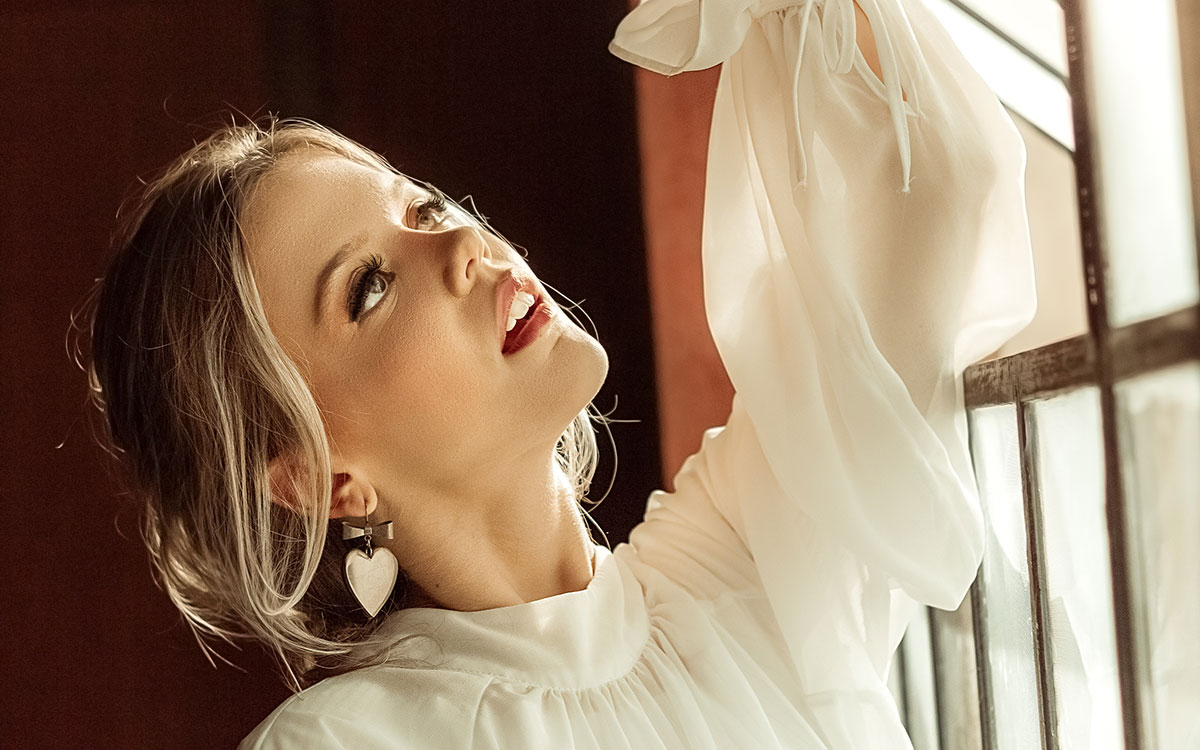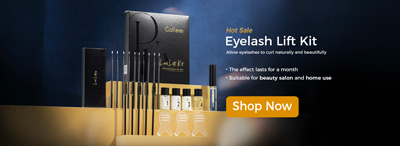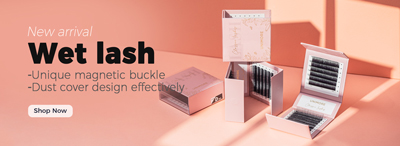It may be a lot of fun to spruce up your work area. An inviting and attractive workspace is appreciated by customers. Items that are used for decoration are a terrific method to express your individuality while also giving a room an atmosphere that is all it's own.
- 1 Certifications And Inspection
- 2 Instructions on How to Get Ready for a Health Inspection At A Lash Studio
- 3 What to Do in the Event That There Is a Health Inspection At A Lash Studio
- 4 What to Do After A Health Inspection At A Lash Studio
- 5 Correcting Health Code Violations
- 6 Checklist for the Sanitation of Eyelash Salons
- 7 Checklist Of Necessities To Ensure That Your Lash Studio Is Up To The Level Set By The Industry And Can Pass A Health Inspection
- 8 Checklist for Daily Sanitation in the Lash Salon
- 9 Conclusion
It is of the utmost importance to show concern for both your customers and your employees. This will help you maintain a positive reputation while also ensuring that your company is profitable and meets the highest standards of both service and safety.
However, as a direct consequence of the widespread coronavirus epidemic, new regulations and processes have been implemented, which have proven to be difficult for many beauty salons to comprehend. However, maintaining a high standard of cleanliness in your treatment area should be your top focus at all times. This is NOT the place to adorn with fibrous, porous components that can harbor airborne viruses; save those kinds of decorations for elsewhere. At no point in time may there be a lapse in the clinical cleanliness of the treatment area!
When a lash client experiences some irritation around her eyes after having lashes applied, many lash technicians instantly come to the conclusion that the problem must be caused by the glue.
One of the most prevalent causes of eye irritation, on the other hand, is not the eyelash extension adhesive but rather contamination in the room where the lashes are applied. This is an important point to keep in mind.
The area in which patients are treated must be free of everything that can be described as fluffy, furry, soft, or velvety. Hold on to props of this kind for the welcome area or the waiting room.
In 2017, salons in the United States generated $56 billion in revenue, with lash extension salons alone accounting for $26 billion of that total. The salon industry is growing at a faster-than-expected rate, with 13 percent job growth expected by 2026, according to the Bureau of Labor Statistics in the United States. Many would-be business owners are drawn to the beauty industry by the rich potential of this sector of the economy. The opening of hair salons is governed by a variety of rules and regulations, which vary depending on the state.
It is crucial to keep in mind that health inspectors are not there with the intention of closing down your business when they arrive for a lash health check, even if the experience can be annoying and stressful. Inspections of lash studios are conducted for the purpose of ensuring that they are managed and arranged in accordance with state and local standards, which serves to protect the general public. We have compiled a lash studio health code checklist for your convenience so that you may feel confident about passing the next inspection of your business.
Certifications And Inspection
Your lash studio will be subject to an inspection by the state board to evaluate whether or not it has met all of the standards for obtaining a license. In order to pass inspection, the lash studio needs to comply with sanitary regulations. The inspector will look to see if you have displayed information regarding the business, such as the license and certification, information on consumer complaints and procedures, information on commission laws, and the salon's operating hours. In addition, the inspector will look to see if you have displayed the salon's operating hours.
Instructions on How to Get Ready for a Health Inspection At A Lash Studio
Brush up on your understanding of operating a lash studio and the requirements that must be followed in order to make sure that your lash studio is ready for an inspection. The following are some suggestions that will assist you in getting ready for the next inspection:
1. Make yourself familiar with the typical infractions of the health code. Always be on the lookout for important safety concerns and regular violations of the health code that occur in lash studios.
2. Get in touch with the health agency in your area. Find out what health inspection forms and rules are being utilized so that you are aware of everything that will be looked for.
3. Perform random, unscheduled self-checks at various points during the day. Because health inspections might happen at any time, all of your staff members need to be prepared to the same degree. After you have completed your self-inspections, you should meet with your staff to go over the results and talk about the corrective steps that need to be taken for any possible infractions.
What to Do in the Event That There Is a Health Inspection At A Lash Studio
When it comes time for your formal health inspection, there are some things that you should do while the inspector is on the premises, as well as certain things that you should not do.
Do...
1. Confirm that the inspector has the proper qualifications. If the inspector does not volunteer to provide you with this information freely, you should inquire about it. If you are still unsure, you should phone your local health department for verification in order to prevent falling victim to a con artist who is looking for free information about businesses.
2. Make sure you keep up with the inspector so that you can get a firsthand look at any lash studio violations. It is essential to keep in mind that you have the ability to make immediate corrections to some breaches. The fact that these infractions will be recorded as having been remedied on the spot is, however, more tempting to potential customers than a label indicating that the business is out of compliance.
3. Sign the report of the inspection. This does not in any way imply that you agree with the results; rather, it serves as evidence that you have received a copy of the report.
4. If you don't understand a violation, ask for an explanation of what happened. If you are unable to identify the issue, you will be unable to find a solution to it.
Do Not...
1. Refuse an inspection. This will only serve to further delay matters, as the inspector will be returning shortly with an inspection warrant and, most likely, a mood that is less than nice.
2. Provide the examiner with any food or beverage they desire. Be courteous and nice, but anything beyond that could be misunderstood as an attempt to bribe the inspector in order to influence the outcome of the inspection.
What to Do After A Health Inspection At A Lash Studio
Your business will be graded on its overall healthiness after the conclusion of the restaurant health inspection. If you were paying attention to the inspector while they were conducting the inspection, the result of the inspection should not come as a surprise to you. You should educate yourself on the salon rating systems in order to have a better understanding of your score and the impact it has on your business. After you have a better understanding of your score, you may move on to addressing any potential infractions.
Correcting Health Code Violations
The outcomes of a poor health inspection can be detrimental to your lash studio, especially given how much simpler it is now for clients to locate and comprehend information regarding health inspection violations. Here are some steps you can take to correct your establishment's violations, whether they are low-risk or high-risk in nature if your business has committed any or all of them:
1. You have the option of scheduling a re-examination of your business anywhere between 5 and 45 days after receiving a low grade on the health inspection. This will buy you some time to make the necessary corrections to the violations.
2. Determine how each violation occurred and how you can stop it from happening again, then write down your findings.
3. Just like you did with your own self-inspection, talk to your employees about any violations they may have found and the appropriate actions to take to fix them.
4. If you believe that a violation was improperly enforced, you have the right to file an appeal. Dial the number for the health department in your area so that you can have a conversation with the inspector's manager.
Checklist for the Sanitation of Eyelash Salons
If you fail to pay attention to this issue, several implements in your lash station, including tweezers, lash cleansing brushes, lash wands, and even your own hands could be responsible for the spread of eye infections between your lash clients.
As a result, ensuring that your lash room is clean and appropriately sanitized ought to be one of the most important things that you focus on to pass a health inspection. If you do not follow these instructions, it is possible that your customers will suffer from adverse effects, such as eye infections and the permanent loss of their natural lashes (and potentially, loss of clients, too), also you might face consequences from the state government.
In each state, there are distinct rules that must be followed regarding decontamination procedures in the workplace. It is in your best interest to read the laws and regulations that your local health department has established, and it is also in your best interest to be aware of them.
To begin, though, it is important to have a solid understanding of the primary distinctions that exist between cleaning, sanitizing, disinfecting, and sterilizing. In order to assist you to obtain a clearer view, we have outlined the various options below.
There Are Four Basic Types Of Decontamination Methods:
1. When cleaning, use soap and water that is warm. This procedure is useful for removing particles off the surface.
2. Sanitizing refers to the process of eliminating or reducing microorganisms by using items containing alcohol.
3. Disinfecting entails bringing the bacterial count down to an acceptable level by using products that contain barricades or germicides.
4. To kill microorganisms by using a very high temperature (sterilization). When it comes to eliminating all forms of life on hard surfaces, this approach is the one that seems to be the most successful.
Checklist Of Necessities To Ensure That Your Lash Studio Is Up To The Level Set By The Industry And Can Pass A Health Inspection
The following is a list of the prerequisites that must be met in order for your workplace to be compliant with industry standards and to guarantee that it will pass a health inspection:
1. The area used for personal services needs to be kept distinct from any pets that may be present as well as any other area that may be used for sleeping, eating, food storage or preparation, bathing, or using the restroom.
2. A sink that is dedicated to the purpose of hand washing and instrument processing but is not located in a restroom or kitchen and is not accessible to customers; this sink is used for processing instruments and washing hands. The following are required for the sink:
- Easily reachable from each respective service area
- Able to accommodate soaking and drying equipment on nearby adequate counter space or other surfaces of a comparable nature
– Provided with liquid soap and single-use towels stored in an appropriate dispenser or a hot air dryer
- Having a size that is appropriate and being made of stainless steel
- Have both hot and cold water available continuously.
3. A toilet and a hand washing basin, along with liquid soap and single-use paper towels stored in an appropriate dispenser or a hot air drier, are required to be installed in a restroom that has a washroom.
4. All work surfaces must be constructed of materials that are smooth, non-porous, and easily cleaned. Examples of such materials include painted drywall, vinyl composite tiles, linoleum, or sealed concrete. Additionally, these surfaces must be in good repair.
5. All work locations need to have sufficient lighting and ventilation.
6. All client contact surfaces, including treatment tables, chairs, and headrests, must have a finish that is easy to clean, nonporous, and smooth, and they must be in good repair.
7. If linens are used, they ought to be changed after each individual customer uses them.
8. Adequate storage space must be available for equipment, instruments and supplies.
9. Appropriate garbage cans should be easily accessible, well-maintained, and routinely emptied.
10. Approved disinfectants, such as PreEmpt, Cavicide, or CS20, must be readily available for use in sanitizing reusable tools, surfaces, and other pieces of equipment.
11. An appropriate skin antiseptic must be available for use both in the preparation of the skin and in the post-treatment phase.
12. It is unacceptable to use products such as regular-strength barricades, glass bead sterilizers, or steam sterilizers. Instead, before using the instruments, they need to be thoroughly cleaned by being rinsed in clean water after being totally submerged in a disinfectant solution for the period of time that is indicated by the manufacturer.
13. After each client uses an item, that item must be removed if it is either incapable of being thoroughly cleaned or is designed for single use only.
14. A container that is resistant to being punctured must be made available for the disposal of sharp objects.
15. All supplies, including pigment, cosmetics, and other types of goods, must be labeled and handled in accordance with the instructions provided by the manufacturer.
16. It is necessary to properly store, maintain, and prepare chemicals, detergents, and cleaners in accordance with the instructions provided by the manufacturer.
Checklist for Daily Sanitation in the Lash Salon
1. Immediately after using a tool, throw away any that can be reused.
2. To clean reusable instruments, wash them with lukewarm water and soap.
3. Remove any remaining residues from the tools by rinsing them in clean water.
4. Apply a new dose of a disinfectant such as a barbecue to the tools that have been cleaned. It is imperative that you make sure to read and follow the directions on the disinfectant properly.
5. Wash the tools in fresh water until the water runs clear.
6. Allow them to dry in the air.
7. Place the tools in an airtight container or cover them with a lint-free cloth before putting them away.
Conclusion
Some business owners and managers approach health inspections with fear or frustration; nevertheless, these checks should be viewed as chances to learn and improve in order to protect the health and safety of your consumers. There are a number of things that can be done in order to get your business ready for the lash studio health inspection, such as providing your personnel with the necessary training to avoid breaking any health codes and performing self-inspections.
When you own and operate your own lash salon, you are the boss, which means that you are responsible for the well-being of both your employees and your customers. In your lash extension salon or studio, health and safety should be your number one concern at all times. There are a lot of different aspects that go into making sure that your salon is as safe and hygienic as it possibly can be, and constantly ensuring that you're up-to-date with the latest laws and regulations can be time-consuming and maybe even beyond what you've been trained for. However, you still need to make sure that It is absolutely necessary to protect one's staff and one's customers, to adhere to the law, and to safeguard yourself against potentially expensive legal action in the event that something goes wrong.
Taking the time to clean your workstation and tools is an important part of your day-to-day responsibilities, and it is a significant step toward ensuring that you will pass the health inspection that is so important to the development of your company. Taking this step is an integral part of your day-to-day responsibilities. Running your own lash salon is a fun and rewarding business to run. Keep in mind that maintaining your health is beneficial for your company. Your efforts are noticed and appreciated by your customers! You will be able to guarantee the success of your business and have full faith in the caliber of your day-to-day procedures if you comply with these conditions.







